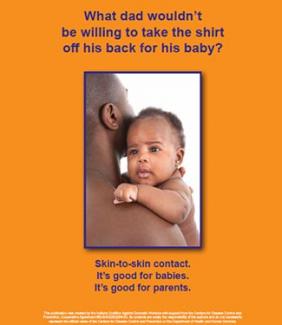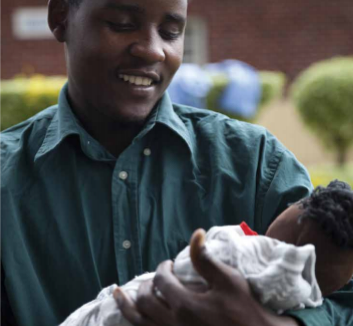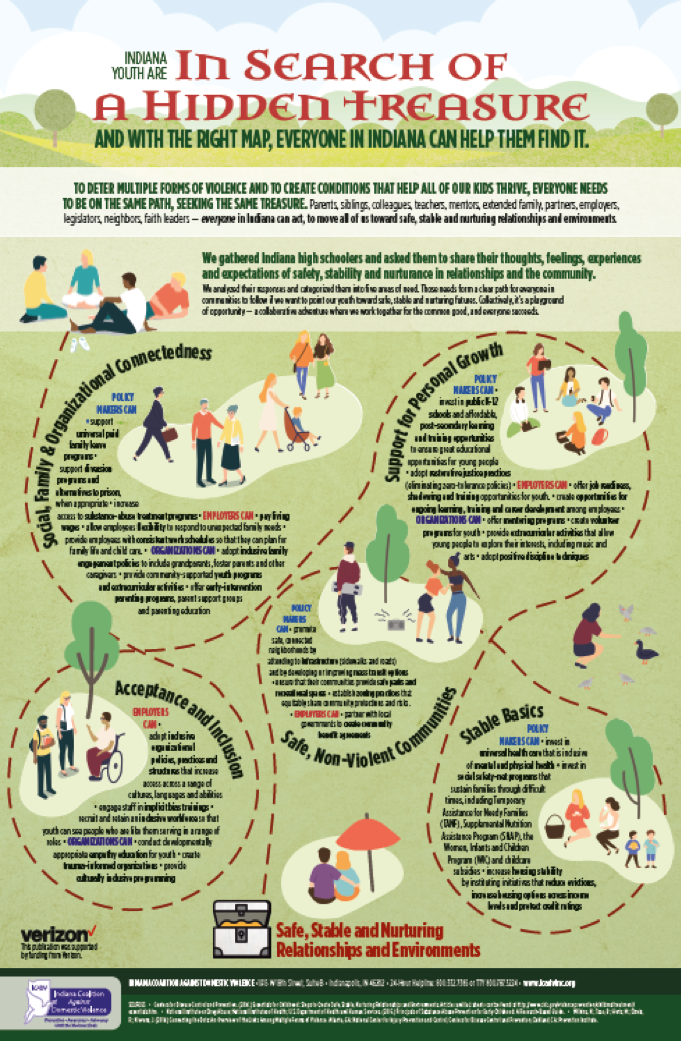By Colleen Yeakle, Coordinator of Prevention Initiatives for the Indiana Coalition Against Domestic Violence
For decades men have participated in efforts to end domestic and sexual violence. Men have provided compassionate support to survivors of gender-based violence, and worked to prevent domestic violence in community settings and on college campuses by raising awareness and also by educating their peers about the dynamics and impact of the problem. And though such efforts have had success in increasing awareness and normalizing conversations about domestic violence, efforts to engage men as allies in violence prevention in Indiana have struggled to maintain momentum over time, and have reached a relatively small number of men. Further, because we know that awareness and information alone are not enough to change behavior, efforts to engage men with those strategies may not be effective in reducing the prevalence of domestic and sexual violence.
Because we believe that preventing gender-based violence is everyone’s responsibility, and because men are particularly well positioned to influence masculine norms and men’s behavior, we’ve asked, “What else can men do to prevent domestic and sexual violence?”
At the Indiana Coalition Against Domestic Violence (ICADV) our prevention strategies center on the idea that what surrounds us, shapes us. In alignment with the Center for Disease Control and Prevention’s (CDC) Essentials for Childhood Framework, we believe that by creating conditions where all of us feel safe, stable and nurtured, we will be successful in preventing multiple forms of violence. We pursue this strategy because we believe that these protective conditions deter both the motivation for abusive behavior and also social tolerance for those behaviors. When we conceptualize prevention as focusing on creating strong, safe, and connected communities and relationships, a vast new playground of prevention opportunities are illuminated for women and men. We seek to engage men in efforts to prevent violence by creating space for them to work to increase protective factors and to decrease risk factors in their families, peer relationships, and communities (for an excellent overview of risk and protective factors related to violence, be sure to see the Connecting the Dots publication from the CDC and Prevention Institute.
Promoting Men’s Roles as Caregivers
One exciting avenue of opportunity in this strategy is inviting men into more caregiving responsibilities. We believe that providing care is one of the best parts of being human, and in international development work, engaging men in caregiving responsibilities has been identified as a central strategy for promoting equality for women, and also for promoting healing and wholeness for men (Barker, 2014). Though nurturance is a fundamental human capacity available to each of us, we recognize that traditional gender roles for men often discourage emotional connectedness and caregiving behaviors. Further, cultural expectations around working outside of the home as a provider can further constrain men’s abilities to practice those skills. We seek to address these barriers in our work in order to invite and allow for greater participation in caregiving responsibilities among men.
We know that where men are more involved with caregiving at any level, women will have greater financial equality through increased participation and influence in the workforce (see wage and wealth gap information here), and that normalizing men’s participation in caregiving promotes connectedness and nurturance, providing a lived alternative to traditional masculinity norms that are centered in individualism, independence and low emotionality (Bem, 1974). There are a variety of ways to incorporate caregiving as a priority in the lives of men, no matter what hours they may work, whether their industry may require long stretches of time away from home, or other factors that may pose challenges to caregiving that are also experienced by women.
Promoting skin-to-skin practice between dads and their infants is a strategy that ICADV uses to invite men into nurturing caregiving relationships with their children. Research shows that skin-to-skin contact is a great way to comfort newborns while helping new parents to bond with their baby and to develop confidence in their abilities to meet their infant’s needs. This practice supports babies’ optimal physical and emotional development. With this simple behavior, we can catalyze a progression of positive outcomes with benefits for babies, dads and parenting couples.
A literature review of skin to skin practice showed that where dads engaged in this nurturing introduction to parenting, they felt better bonded with their infant and more capable of participating in parenting responsibilities. Where dads feel more connected and capable, they are likely to share more parenting responsibilities thereby potentially reducing maternal stress, reducing inter-parental conflict, and increasing protections for the child across the lifespan. Importantly, this behavior is available to all dads across regions, races, ages, classes, and other identities. This practice doesn’t require extensive funding or training—just our physical presence, time and compassion. At ICADV we have partnered with a range of healthcare providers, home visitation programs, birthing classes, and the Women, Infants and Children (WIC) program to broadly promote skin to skin practice.
We recognize that to truly enable caregiving among men, we must address the rigid gender norms that create barriers to nurturing behaviors, but we must also address the policy, practice and structural barriers that reinforce the idea that caregiving is women’s work. This means everything from ensuring that paid family leave policies are inclusive (emphasis on inclusive! We want to make nurturing available for all working dads—not just dads in high wage positions) of dads to ensuring the presence of changing tables in all restrooms. There are roles for men at every stage in this progression—from modeling nurturing parenting behaviors to advocating for inclusive leave policies at the state house and in the workplace.
What’s next?
Birth is a great place to start engaging men through the promotion of protective factors within their families, but to increase the reach of nurturing behaviors and to normalize those behaviors among men, we know that we have to create additional opportunities for men to contribute to protective factors in their communities. To identify priority areas for action, ICADV asked high school students involved in violence prevention groups around Indiana to tell us what they need to feel safe, stable and nurtured in their communities. A few of the things that young people in Indiana told us were:
- They want to feel connected—to their families and to their friends;
- They want to grow in environments that are free from physical dangers, and also discrimination;
- They need to be able to rely on stable basics (things like housing, food security and transportation) in order to learn and thrive; and
- They want opportunities to learn and grow.
We collected this advice into an infographic illustrating multiple areas of action that men can take to prevent multiple forms of violence by increasing safety, stability and nurturance in the lives of all youth in Indiana.
For more information about strategies underway in Indiana to prevent domestic violence by promoting safety, stability and nurturance, we invite you to check out our Small Moments website. And feel free to contact us if you’d like to talk more about our work, or to order materials promoting the skin to skin practice or safe, stable and nurturing campaign.
Related Resources
Find resources and strategies for engaging men in the PreventIPV Tools Inventory, including:
- Small Moments from the Indiana Coalition Against Domestic Violence
- Skin-to-Skin Campaign from the Indiana Coalition Against Domestic Violence
- Involved Fatherhood and Gender Equity Project from the White Ribbon Campaign
- MenCare Campaign from MenCare
References
Barker, G. (2014). A Radical Agenda for Men's Caregiving. IDS Bulletin, 45: 85–90. doi:10.1111/1759-5436.12072
Bem, S. L. (1974). The measurement of psychological androgyny. Journal of Consulting and Clinical Psychology, 42(2), 155-162.
Wilkins, N., Tsao, B., Hertz, M., Davis, R., Klevens, J. (2014). Connecting the Dots: An Overview of the Links Among Multiple Forms of Violence. Atlanta, GA: National Center for Injury Prevention and Control, Centers for Disease Control and Prevention Oakland, CA: Prevention Institute.
Photo: Participant in the MenCare+ Program in Rwanda. © Seth Chase/Promundo
















